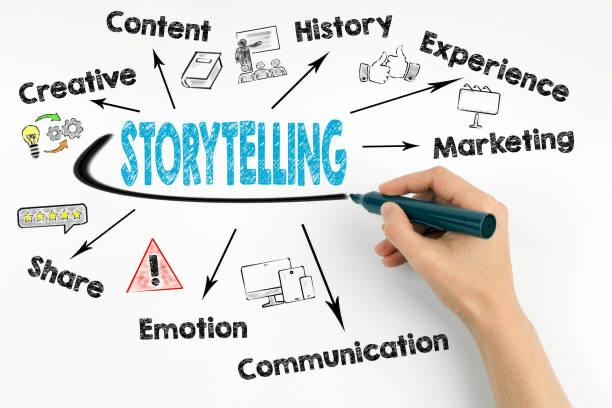TYD May Article Zhanar

The Power of Storytelling in Business: Why Narratives Sell Better Than Facts?
Let’s play a game. Which of these sounds more interesting?
Option 1: “Our productivity app increases efficiency by 37% through optimized workflow algorithms.”
Option 2: “This is how a 19-year-old dropout used our app to build a million-dollar business while working 10 hours a week.”
If you picked Option 2, congratulations — you’ve just proved a fundamental principle of modern business: stories sell better than facts.
In today’s attention economy, data alone doesn’t win hearts or open wallets. Instead, businesses that thrive are those that weave narratives around their products, turning statistics into stories and customers into characters. Here’s why storytelling is more than just marketing fluff — it’s an economic tool that can drive real results.
- The Neuroscience of Storytelling
- This explains why:
- Stories Create Competitive Moats
Research from Stanford University reveals that the human brain is 22 times more likely to remember information embedded in a story than standalone facts. This isn’t coincidence—it’s biology. When we hear a story, our brains release dopamine (linked to pleasure) and oxytocin (associated with trust), creating an emotional connection that pure data cannot replicate.
– You can recite entire movie dialogues but forget your own phone number
– TED Talks with personal stories get 3x more shares than data-heavy presentations
– The most successful startups often have the worst spreadsheets but the best origin stories
When you tell someone a story, they don’t just listen — they feel. Emotions drive consumer behavior more than rational thinking ever will. That’s why a compelling narrative about how a product changed someone’s life will always outperform a cold, factual pitch. Storytelling enables these brands to build emotional bridges between the customer and the product.
Narratives Simplify Complexity
In a world flooded with information, the human brain craves simplicity. Statistics, specs, and features often overwhelm — but stories package complexity into digestible, relatable experiences.
Narratives offer context, emotion, and meaning. They don’t just explain how something works — they show why it matters in someone’s life. This makes it easier for audiences to connect with the idea and remember it long after the details are forgotten.
Consider Tesla. The company could easily promote itself by focusing on the engineering behind its electric motors or the complexity of its autonomous driving algorithms. But instead, Tesla tells a bigger story: a future where driving doesn’t harm the planet, where technology and sustainability work hand-in-hand, and where innovation leads to freedom and progress. That story is what captures the public imagination — not kilowatt-hours or software updates.
Products can be copied. Features can be replicated. But stories are uniquely yours. A powerful narrative — your brand’s origin, mission, and values — becomes a valuable strength that competitors can’t duplicate. It builds emotional loyalty, customer trust, and long-term economic value.
Take Nike as an example. Thousands of brands sell athletic wear. But Nike’s “Just Do It” campaign transformed shoes into a symbol of ambition, perseverance, and greatness. It’s not just about wearing sneakers — it’s about identifying with the underdog, the champion, the dreamer.
That story is Nike’s true competitive moat. While competitors compete on price or performance, Nike dominates by selling a mindset. And that mindset keeps people coming back — not for the product, but for the feeling it gives them.
As a teen, learning how to tell a great story can help you stand out — whether you’re presenting a school project, starting a small business, applying to university, or creating content online. But here’s the key: storytelling and statistics work best together. A powerful narrative captures attention and builds connection, while solid facts and data add credibility and proof. For example, if you’re pitching an idea, tell a relatable story to draw people in, then back it up with numbers that show real impact. In the near future, this balance will help you communicate more clearly, persuade more effectively, and leave a lasting impression wherever you go.
– By Zhanar
